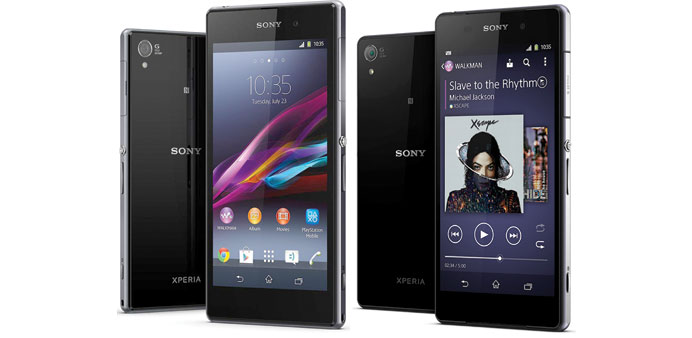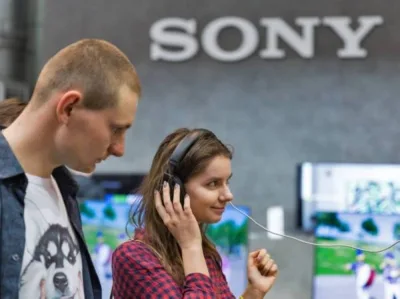by Bilal Iqbal
|
|
The greatest jump in smartphones’ user experience was arguably when the first of multicore processors rolled off the fabrication line and made its way to consumers. The speed difference was noticeable, making the entire operation of the phone that much smoother and easier to live with.
Advancements have continued since the early days of 2011, with processors moving from dual to quad and even octa-core setups. The RAMs have gone up from 512mb to as much as 3gb now. But every new jump in smartphone technology feels like an incremental upgrade (except for when the first of HD screens were outed — the old WVGA displays felt positively ancient in front of the 720p display units). On the whole, the improvements are noticeable but not quite compelling enough to convince someone to let go of their 12-month-old smartphone in favour of the latest offering. The pace of progress is, perhaps, guided by the nature of cellphone contracts around the world, where most customers are not eligible for an upgrade before a period of 2 years. So it won’t be until two years from now that you will feel a substantial difference between your latest cellphone and whatever’s new on offer then.
Sony, however, has taken this concept of incremental upgrades to a whole new level, starting with Xperia Z1. Instead of a 12-month upgrade cycle, the Japanese giant is sticking to a 6-month release commitment. The Xperia Z1 was announced and released in September 2013. The Xperia Z2 followed roughly six months later, in April 2014 (after being announced in February 2014).
The difference between the two, as you would expect, are even more minor than what you will find in a 12-month refresh cycle. The major upgrades to the Z2 are the screen and the RAM. The screen gets bumped from 5 inches to 5.2 inches and gets a brand new IPS panel that, according to reviews, is better to look at than the Z1’s screen. The RAM goes from 2gb to 3gb, which should help with better multitasking.
The weight decreases slightly from Z1 to Z2, going from a heavy 170 grams to a still-heavy 163 grams (for a comparison, the Samsung Galaxy Note 3 boasts a much bigger screen at 5.7 inches and as big a battery for 168 grams).
One thing worth nothing is that while the two phones share similar battery sizes (3000mah in Z1 and 3200 mah in Z2), GSMArena’s testing shows a vast difference in the actual life you get out of those battery packs per charge. The hardware in the Z2 might have been optimised to run more efficiently in comparison with Z1. The difference is huge: the testing shows an improvement of more than 1.5 times in battery life for a balanced use scenario. If you are a heavy web user on your phone, the Z2 almost doubles the battery life of Z1 (11.5 hours vs 6 hours). The story for video play back is similar, with Z2 able to play video nonstop for over 12 hours on a single charge, compared to Z1’s 6 hours.
That said, the tests on Z1 were carried out when it came out and was on older software. Its latest update to Android Kit Kat should have narrowed the gap between the two phones. Even if the update does not significantly improve the battery life, Z1 has plenty of juice in it to get an average user through a day of normal use.
The rest is all same. Both phones come with the exact same 20.7 megapixel camera unit in them, and any difference in picture quality is minor at best and can be attributed to the way the software handles the image processing (which means, both phones should have similar image quality down the road as the updates introduced in the Z2 software also make their way to Z1).
The Z2 does have one minor (as of this writing) camera advantage over the Z1 in that it can record QHD videos (four times the resolution of a 720p video), while the Z1 cannot. But unless you own a UHD TV (four times the resolution of a 1080p video), you won’t have anywhere to actually see them in full detail. You might still be interested in future-proofing any home videos that you might take with your phone though. Even so, if you are seriously interested in getting the best possible home videos, you might want to look at dedicated camcorders that would produce better video qualities than any phone right now can.
Both phones come with IP58 certification for dust and waterproofing (depth of up to 1 metre for 30 minutes). Both offer 16gb of built-in memory and expandable storage. Both support exactly the same theoretical speeds over 3G and 4G networks and are killer to look at.
The processor in Z2 is ever so slightly faster than the Z1 (2.3 GHz quadcore vs 2.2GHz quadcore, both using the same processing technology). The improvement in speed or performance due to the processor, thus, will be unnoticeable in regular use.
There is no doubt that the Sony Xperia Z2 offers an upgrade over the Z1 and is overall a better smartphone than Z1. Money no object, Z2 would be the preferable choice every single time. But then money is always part of the equation, isn’t it? And that’s where things get interesting. The Xperia Z1 can be had in Qatar for as low as QR2,000 from some retailers in Qatar, while the Xperia Z2 is currently retailing for a cool QR2,700. What makes things even more interesting is the expected announcement of the Xperia Z3 in September, which will be a similar incremental upgrade over the Z2, as it was over the Z1.
To me, the improvements that the Z2 offer over Z1 are not worth the extra QR700 that I am being asked to shell out (I would perhaps be willing to pay an extra QR200-QR300 for the upgrades). If on the other hand, you are happy enough paying the asking price for the Z2, you might be interested in waiting it out for just a month longer and see how the story with the Z3 pans out. Because once the Z3 is released, it will cost the same as Z2 and will definitely be an improvement over it.
l The author may be contacted at [email protected]
Key specs at a glance
Key specs at a glance
Sony Xperia Z1 Sony Xperia Z2
Screen size 5 inches 5.2 inches
Screen resolution 1080p 1080p
Screen technology TFT IPS
Storage 16gb 16gb
Expandable Storage Yes Yes
RAM 2gb 3gb
Processor 2.2GHz quadcore 2.3GHz quadcore
Snapdragon 800 Snapdragon 801
GPU Adreno 330 Adreno 330
FM Radio Yes Yes
Camera 20.7MP 20.7MP
Front Camera 2MP 2.2MP
Bluetooth v4.0 v4.0
3G, 4G support Yes Yes
FLAGSHIP BATTLE: The Xperia Z2, right, offers a minor upgrade over the Xperia Z1 and any choice between the two invariably comes down to the prices that they are being offered at.



